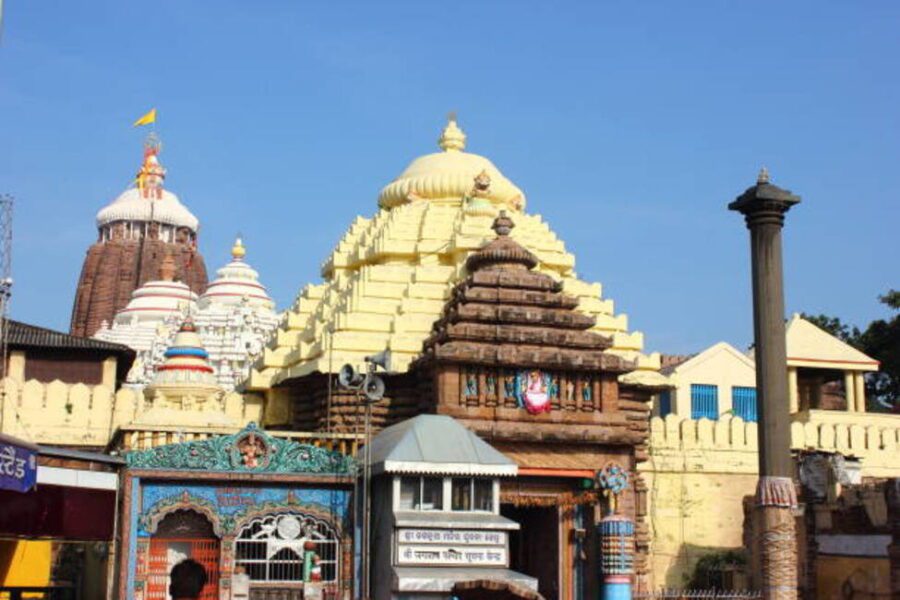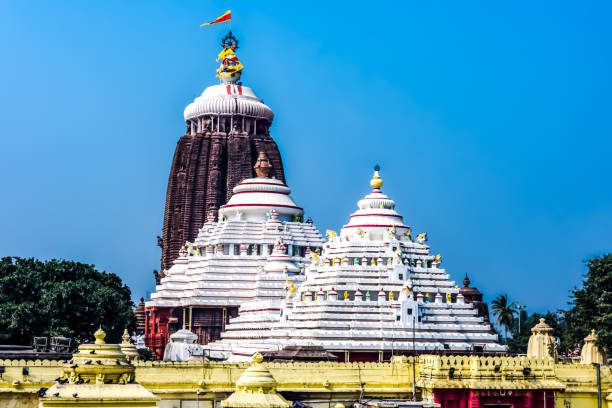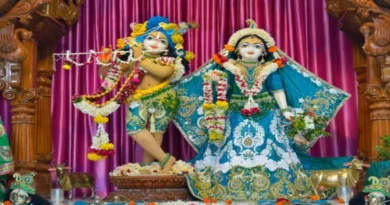11 Amazing fact about the Jagannath Temple , Puri

The Jagannath Temple in Puri, Odisha, is not just an architectural wonder but a spiritual haven filled with intriguing mysteries and captivating traditions. Let’s delve into some fascinating facts that make this ancient temple truly remarkable.
1. Colossal Chakra Mystery: At the temple’s peak rests the Sudarshan Chakra, a massive metal structure that baffles experts with its weight and consistent appearance from all angles, showcasing ancient engineering marvels.
2. Jagannath Flag: Contrary to natural laws, the Jagannath Flag moves against the wind’s direction, a phenomenon that continues to puzzle scientists, adding to the temple’s mystical aura.
3. The Daily Climb by the Priest: Each day, a priest undertakes a daring task similar to scaling a 45-story building to change the temple’s flag. This ritual, performed without safety gear, symbolizes deep-rooted traditions and unwavering faith.
4. Shadow less Temple: Regardless of the sun’s position, the Jagannath Temple casts no shadow, defying logical explanation and sparking various interpretations.
5. Nothing’s Above God, So Nothing Flies Above it Either: Birds avoid flying over the temple, and even airplanes divert their paths, displaying reverence and enhancing the temple’s spiritual significance.
6. There’s Never a Shortage of Food: The temple efficiently manages its resources to ensure it never runs short of food, highlighting its commitment to hospitality and reverence for Lord Tirupati Balaji.
7. Mute Water: Upon entering the temple, the sound of ocean waves becomes inaudible, fostering an atmosphere of serenity attributed to divine will.
8. Magical Methods to Cook: The temple’s kitchen employes a unique cooking method using seven pots stacked atop each other, symbolizing ritual and tradition, and preserving ancient customs.
9. Deities Renewal: Through the sacred ritual of Nabakalebara, wooden deities are replaced every few years, symbolizing the cycle of creation and preservation, and embodying the temple’s timeless connection to Hindu mythology.
10. The Rath Yatra: During the annual Rath Yatra, deities are paraded on elaborately decorated chariots, drawing thousands of devotees and fostering community participation and spiritual reverence.
11. Jagannath Temple was Plundered in the Past: Historical wealth attracted plunderers, leading to invasion attempts and the temple’s closure during certain periods, emphasizing its historical significance.
Frequently Asked Questions (FAQs):
Q. What makes Jagannath Temple unique?
A. The Jagannath Temple’s architectural brilliance and peculiar phenomena, like the absence of shadows and the Sudarshan Chakra’s positioning, contribute to its distinctiveness.
Q. What happens every 12 years in Jagannath Puri?
A. Every 12 years, the temple undergoes the sacred ritual of Nabakalebara, where the wooden deities are replaced.
Q. What distinguishes Lord Jagannath?
A. Lord Jagannath holds significance as the lord of all three worlds and is particularly revered in the Orissa region.
Q. Why does Jagannath experience a fever?
A. According to Hindu mythology, Jagannath experiences a fever after prolonged bathing during the Devasnana Purnima event.
Q. Why are Jagannath’s eyes large?
A. Different beliefs suggest that Jagannath’s large eyes symbolize his omnipresence and vigilance over his devotees.
Q. Where is Krishna’s heart believed to reside?
A. Lord Krishna’s heart is believed to reside in the Jagannath Temple in Puri, Orissa, one of the Char Dhams.
In conclusion, the Jagannath Temple of Puri is not just a religious landmark but a treasure trove of history and culture. Its mystique, spiritual allure, and captivating traditions continue to enchant visitors, offering profound insights into the mysteries of the universe.



